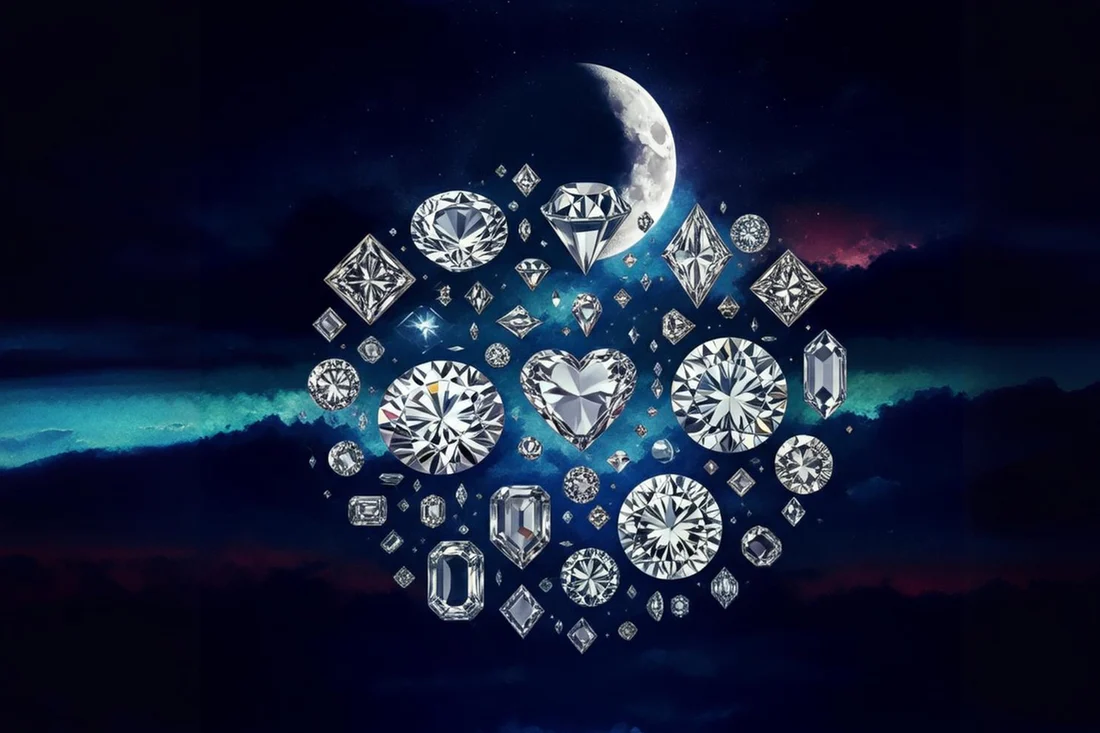A Complete Guide to Diamond Classification, Quality, and Types

Diamonds have long been regarded as the ultimate symbol of luxury, elegance, and timeless beauty. However, not all diamonds are created equal. Understanding diamond classification, quality, and the various types available is essential when purchasing or investing in these exquisite gems. In this guide, we will explore the classification system, quality grading, and different kinds of diamonds to help you make informed decisions.
1. Understanding Diamond Classification
Diamonds are classified based on several key factors that influence their value, beauty, and rarity. The most widely accepted classification system is the 4Cs developed by the Gemological Institute of America (GIA):
a. Cut
The cut of a diamond refers to how well it has been shaped and faceted. It directly impacts the brilliance and sparkle of the stone. The better the cut, the more light is reflected, creating that dazzling effect diamonds are famous for.
Diamond Cut Grades:
- Excellent – Maximum brilliance and fire.
- Very Good – High brilliance with minor flaws in light reflection.
- Good – Decent sparkle but less brilliance.
- Fair – Limited sparkle and reflection.
- Poor – Low brilliance due to improper cutting proportions.
b. Color
Diamonds are graded on a scale from D (colorless) to Z (light yellow or brown). The less color a diamond has, the rarer and more valuable it is.
Diamond Color Grades:
- D-F (Colorless) – Highly valuable and rare.
- G-J (Near Colorless) – Slight color tints but still visually white.
- K-M (Faint Color) – Noticeable warmth; lower value.
- N-Z (Light Color) – More visible color, often used in fashion jewelry.
c. Clarity
Clarity measures the presence of internal inclusions and external blemishes. A flawless diamond is extremely rare and valuable.
Diamond Clarity Grades:
- Flawless (FL) – No inclusions or blemishes visible under 10x magnification.
- Internally Flawless (IF) – No inclusions, only minor surface blemishes.
- Very, Very Slightly Included (VVS1 & VVS2) – Extremely difficult to see inclusions.
- Very Slightly Included (VS1 & VS2) – Minor inclusions visible under magnification.
- Slightly Included (SI1 & SI2) – Noticeable inclusions under magnification.
- Included (I1, I2, I3) – Visible inclusions affecting brilliance.
d. Carat Weight
Carat refers to the weight of a diamond. Larger diamonds are rarer and more expensive, but carat weight should always be balanced with cut quality for maximum brilliance.
Popular Carat Sizes:
- 0.25 – 0.50 carat – Delicate and elegant.
- 0.75 – 1.00 carat – A common size for engagement rings.
- 1.50 – 2.00 carats – A statement piece.
- 3.00+ carats – Rare and luxurious.
2. Different Types of Diamonds
Diamonds come in various types based on their formation, chemical composition, and overall appearance. Here are the most notable types:
a. Natural Diamonds
These are diamonds formed over billions of years under extreme heat and pressure beneath the Earth’s surface. They are the most sought-after and valuable type.
b. Lab-Grown Diamonds
Lab-created diamonds are chemically and physically identical to natural diamonds but are produced in controlled environments. They are more affordable and environmentally friendly, making them a popular alternative.
c. Colored Diamonds (Fancy Diamonds)
Colored diamonds occur naturally when trace elements interact with carbon during formation. The most valuable colored diamonds include:
- Blue Diamonds – Colored by boron.
- Pink Diamonds – The cause of color is not entirely known but may involve extreme pressure.
- Yellow Diamonds – Due to nitrogen impurities.
- Green Diamonds – Resulting from natural radiation exposure.
- Red Diamonds – The rarest of all colored diamonds.
d. Treated Diamonds
Some diamonds undergo treatments to enhance their color or clarity. Common treatments include laser drilling, high-pressure high-temperature (HPHT) processing, and fracture filling. While they are more affordable, treated diamonds have lower value compared to untreated stones.
e. Synthetic & Simulated Diamonds
- Synthetic Diamonds – Lab-created diamonds that have the same composition as natural ones.
- Simulated Diamonds – Stones that mimic the appearance of diamonds but are not real (e.g., cubic zirconia and moissanite).
3. Choosing the Right Diamond for You
Selecting a diamond depends on personal preference, budget, and intended use. Here are some key considerations:
a. Purpose of the Diamond
- Engagement Rings: Look for well-cut diamonds with excellent brilliance.
- Investment: High-carat, colorless, and flawless diamonds hold long-term value.
- Everyday Wear: A balance of quality and durability is ideal.
b. Certification & Authentication
Always purchase diamonds that come with certification from trusted gemological institutes like GIA, IGI, or AGS to ensure authenticity and quality.
c. Setting & Metal Choice
The right setting enhances the diamond’s beauty. Popular settings include:
- Prong Setting – Allows maximum light exposure.
- Bezel Setting – Protects the diamond.
- Pavé Setting – Adds extra sparkle with smaller diamonds.
- Halo Setting – Surrounds the main diamond for a dramatic effect.
Metals like platinum, white gold, yellow gold, and rose gold complement different diamond types and styles.
4. Conclusion
Diamonds are more than just beautiful gemstones; they hold value, history, and personal significance. Whether you are purchasing a diamond for a special occasion, investment, or personal style, understanding its classification, quality, and types helps you make the best decision.
With the right knowledge, you can select a diamond that not only enhances your jewelry collection but also stands as a testament to elegance, confidence, and timeless luxury. Always choose wisely, seek certification, and enjoy the beauty of one of nature’s most precious creations.

